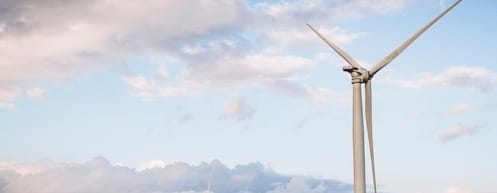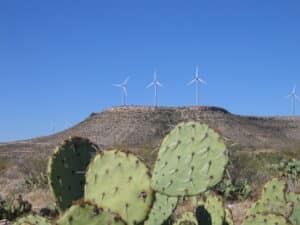This website uses cookies as well as similar tools and technologies to understand visitors’ experiences. By continuing to use this website, you consent to Columbia University’s usage of cookies and similar technologies, in accordance with the Columbia University Website Cookie Notice.
Energy Explained
Insights from the Center on Global Energy Policy
States up and down the Atlantic coast have plans to construct 50 gigawatts[1] (GW) of offshore wind generation by 2040, more than enough to meet President Biden’s goal of connecting 30 GW of offshore wind to the grid by 2030 to power 10 million homes.[2] While installing 800-foot wind turbines 10 miles off the Atlantic coast may sound daunting,[3] more significant barriers may be the nontechnical ones—of siting, permitting, planning, and funding the transmission infrastructure—necessary to getting the power generated by these behemoths to shore and distributed to customers.
One possible path to minimizing these challenges: constructing an offshore wind transmission “superhighway” that would allow offshore wind farms to connect to an ocean-based grid directly, without each farm site having to construct its own transmission facilities and go through the slow process of permitting and siting those facilities across a conflicting web of federal, state, and local rules.[4] An offshore wind highway would need to be permitted and sited only once, potentially leading to wind projects that are faster and cheaper. And because coordinated transmission solutions involve fewer shore crossing and fewer miles of total cabling, they may have a lower impact on the environment and local communities.
Two states in the mid-Atlantic region—Maryland[5] and New Jersey[6] (where I served on the government team tackling offshore wind transmission)—have called for regional cooperation on offshore wind transmission efforts, joining New England states[7] in explicitly planning for regional offshore wind superhighways. The federal government, meanwhile, has launched a series of efforts to get the United States building more transmission facilities, with offshore wind a main focus area.[8] State and federal governments are collectively signaling openness to the type of federal-state cooperation needed to make a Florida-to-Maine offshore wind grid a reality.
Benefits of Coordinated Transmission Planning
An offshore wind superhighway has the potential to significantly reduce the risks of connecting a new wind farm. If the risks of connecting wind to the grid are reduced, offshore wind providers are able to provide lower-cost bids—with lower risk premiums assigned to siting, permitting, and construction—directly leading to cheaper electricity for consumers. Estimates are that pre-building transmission could cut environmental impacts in half and save electricity consumers billions.[9]
Pre-building transmission to connect renewables-rich areas to load centers is not a new idea. The Competitive Renewable Energy Zone (CREZ) program, launched in Texas in the mid-2000s to connect wind-rich areas in West Texas to load centers, could serve as a model for an offshore wind grid. It eventually funded the construction of 3,600 miles of new transmission lines and facilitated the construction of over 20 GW of onshore generation.[10]
Desert Sky Wind Farm in West Texas. Photograph via Wikimedia Commons.
Inspired in part by the CREZ model, New Jersey also elected to pre-build transmission facilities. The state’s first foray into offshore wind transmission estimated that connecting 6,400 megawatts of offshore wind through its competitive transmission-first solicitation process was about $900 million cheaper than using traditional methods of interconnecting wind farms.[11] New Jersey concluded that prebuilding the necessary transmission infrastructure shaved years off of the potential timeline for connecting offshore wind to the grid.[12] The state also found that encouraging offshore wind generators to share necessary electrical infrastructure, including sharing of cable rights-of-way across the shore, reduces disruption to coastal residents,[13] minimizes impacts to the environment,[14] and condenses multiple independent siting and permitting proceedings into one.[15]
Recent Policy Developments
A spate of recent state and federal policy announcements is putting sharper focus on offshore wind transmission planning efforts. In late 2022, the United States Department of Energy’s (DOE) National Renewable Energy Lab released its “Atlantic Offshore Wind Transmission Study,” which lays out what an offshore wind grid, including both offshore and on-shore components, could look like.[16] And last week federal regulators announced a slew of efforts to accelerate transmission build-outs, including new rules on designating areas that are primed for transmission expansion, known as National Interest Electric Transmission Corridors[17] and plans to streamline electric transmission permitting and siting, with a particular focus on offshore wind transmission.[18] The Federal Energy Regulatory Commission is taking comments on how to wield its new authority to help site multistate transmission lines, granted as part of the Infrastructure Investment and Jobs Act.[19]
These federal initiatives come at a critical time to support state-led efforts. Both Maryland and New Jersey are part of the same mega electricity market, known as PJM Interconnection, which runs a combined electric grid that stretches across all or part of 13 states and the District of Columbia. State policy makers occupy a special position in PJM, with the ability to demand inclusion of transmission projects, considered necessary to meet state public policies, directly into the PJM transmission expansion process.[20] Transmission projects sponsored by state actors can bypass time-consuming hurdles, such as battles over cost allocation and siting, and take advantage of PJM’s competitive transmission solicitation process to achieve better prices for consumers.
New Jersey was the first to utilize the PJM transmission planning process reserved for state actors.[21] In November 2020, New Jersey formally requested that PJM help expand the transmission system to connect 7.5 GW of generation to the PJM grid.[22] PJM and the New Jersey Board of Public Utilities collaborated on the nation’s first-ever competitive offshore wind transmission solicitation in 2022,[23] with the winning bidders currently in the process of constructing onshore grid upgrades. New Jersey announced a second transmission solicitation on April 19, seeking bids again on an offshore wind grid and this time looking to partner with other states and the federal government.[24]
In Maryland, on April 21, freshly elected governor Wes Moore signed new legislation directing the Maryland Public Service Commission to explore the feasibility of building its own offshore wind grid.[25] In addition to significantly increasing offshore wind generation targets, the law directs the Maryland Public Service Commission to sponsor a competitive solicitation “for open access offshore wind transmission” and related onshore facilities.”[26] The law further directs Maryland to “evaluate the potential for cooperating with other states in the PJM region to maximize consumer benefits[.]”
These similarities between Maryland and New Jersey provide an opportunity for the two states to collaborate on a mid-Atlantic offshore wind backbone and potentially serve as a catalyst for a larger full-East Coast grid, as well as act in concert to fast-track the on-shore upgrades that will be needed to the regional transmission grid.
Putting the Pieces Together: Federal-State Cooperation
Still, significant barriers remain to actually building an offshore grid. First, offshore wind transmission solutions aren’t cheap. The type of multistate offshore transmission highway envisioned in the DOE’s groundbreaking report is likely to run into the tens of billions of dollars, significantly more than any single state—or even a collection of states—is likely going to be willing to fund on its own.[27] Federal policy makers will likely need to identify sources of funding to make a transmission backbone a realistic possibility.[28]
Second, like any good orchestra, an offshore wind superhighway will need a conductor. States will need help in crossing jurisdictional boundaries, particularly those between regional transmission grids. The DOE’s Atlantic Wind Transmission program has done extensive conceptual planning for an ocean grid, but would need additional authority to put its plan into operation. Regional electric grid operators have the technical know-how, but may need to be formally tasked with a planning for a multiregional approach. Or Congress could consider authorizing a new Power Marketing Administration to construct the ocean grid, which has been a tried-and-true method of growing electrical infrastructure since the 1930s.[29]
Any of these options could work. A concerted state and federal partnership could bridge the planning and financial gap between collective aspirations for the offshore wind transmission grid of the future and the harsh realities—if not of the ocean, then of our political systems.
Notes
[1] States have currently committed to 50 GW along the East Coast (Connecticut at 2 GW, Maryland at 8.5 GW, Massachusetts at 5.6 GW, New Jersey at 11 GW, New York at 9 GW, North Carolina at 8 GW, Rhode Island at 1 GW, and Virginia at 5.2 GW).
[2] https://www.whitehouse.gov/briefing-room/statements-releases/2022/09/15/fact-sheet-biden-harris-administration-announces-new-actions-to-expand-u-s-offshore-wind-energy/.
[3] The technical challenges are real, but largely solved. Over 17 GW of offshore wind were successfully installed on ocean floors all over the world in 2021. See https://www.energy.gov/eere/wind/articles/offshore-wind-market-report-2022-edition. The technology behind today’s undersea cables used to bring power from offshore wind farms to shore was first pioneered in the mid-19th century.
[4] Delivering coastal wind power to customers involves years of planning and construction of major electrical infrastructure, including miles of sub-sea cables, offshore “collector stations,” underground corridors to bring the cables onshore, and—sometimes most time-consuming of all—upgrading the onshore power grid to reliably deliver the electricity to customers.
[5] Maryland Senate Bill 781. Section 7-704.3(b)(2) states that the state “shall consult with other states served by PJM Interconnection to evaluate regional transmission cooperation that could help achieve the State’s renewable energy and offshore wind energy goals with greater efficiency,” including evaluating the use of “an open-access collector transmission system to allow for interconnection of multiple qualified offshore wind projects at a single substation.” https://mgaleg.maryland.gov/2023RS/bills/sb/sb0781E.pdf.
[6] “In the Matter of the Second State Agreement Approach for Offshore Wind Transmission,” Docket No. QO23030129, p. 9 (recommending “that the Board work with other East Coast states that have OSW programs and gauge their interest in coordinating on a regional OSW transmission solution, up to and including a regional OSW ‘backbone’ transmission system”) and p. 10 (directing “Staff to accelerate engagement with other states, regional grid operators, federal regulators, and other interested stakeholders about a regional OSW transmission solution.”)
[7] https://portal.ct.gov/DEEP/News-Releases/News-Releases—2023/CT-ME-MA-NH-RI-and-VT-Working-Together-on-Multi-State-Transmission-Infrastructure.
[8] On May 10, 2023, the White House called upon Congress to “[e]xpedite the connection of interstate and offshore electric transmission lines by providing for electric transmission siting and cost allocation.” See “FACT SHEET: Biden-Harris Administration Outlines Priorities for Building America’s Energy Infrastructure Faster, Safer, and Cleaner,” https://www.whitehouse.gov/briefing-room/statements-releases/2023/05/10/fact-sheet-biden-harris-administration-outlines-priorities-for-building-americas-energy-infrastructure-faster-safer-and-cleaner/.
[9] “The Benefit and Urgency of Planned Offshore Transmission: Reducing the Costs of and Barriers to Achieving U.S. Clean Energy Goals,” prepared by the Brattle Group on behalf of the Natural Resources Defense Council, et al., p. 1 (“we project that starting proactive planning for these long-term offshore wind generation needs now likely will save U.S. consumers at least $20 billion and reduce environmental and community impacts by 50%”), https://www.brattle.com/wp-content/uploads/2023/01/Brattle-OSW-Transmission-Report_Jan-24-2023.pdf.
[10] https://www.bakerinstitute.org/research/texas-crez-lines-how-stakeholders-shape-major-energy-infrastructure-projects.
[11] “In the Matter of Declaring Transmission to Support Offshore Wind a Public Policy of the State of New Jersey,” Docket No. QO20100630, October 22, 2022, p. 2 (“The savings New Jersey ratepayers realize from the selection of these transmission projects are estimated to be over $900 million”), https://www.nj.gov/bpu/pdf/boardorders/2022/20221026/8A%20ORDER%20State%20Agreement%20Approach.pdf.
[12] Ibid p. 30.
[13] Ibid p. 61 (“In addition to the significant cost savings, there are substantial environmental and permitting benefits, as well as reduced community impacts this solution provides. OSW generators will also benefit greatly from this recommended solution, as it minimizes cost and delay uncertainty, ensuring a clearer path forward for developing their OSW projects.”)
[14] Ibid p. 38 (“[H]aving fewer Transmission Corridors provides a number of significant benefits, including potentially greater cost savings, reduced environmental impacts, and fewer community disruptions. Critically, guaranteeing fewer Transmission Corridors through a coordinated transmission approach is the only way to guarantee the wide range of environmental and community benefits outlined above.”)
[15] Ibid p. 61.
[16] https://www.nrel.gov/wind/atlantic-offshore-wind-transmission-study.html.
[17] On May 9, 2023, the US Department of Energy issued a Notice of Intent and Request for Information “to inform the designation of National Interest Electric Transmission Corridors,” https://www.energy.gov/gdo/articles/doe-proposes-national-interest-electric-transmission-corridor-designation-process.
[18] https://www.whitehouse.gov/briefing-room/statements-releases/2023/05/10/fact-sheet-biden-harris-administration-outlines-priorities-for-building-americas-energy-infrastructure-faster-safer-and-cleaner/.
[19] Section 216 of the Federal Power Act, 16 U.S.C. §824p.
[20] PJM Inside Lines, “New Jersey Marks Milestone for Offshore Wind Using PJM’s State Agreement Approach,” October 26, 2022, https://insidelines.pjm.com/new-jersey-marks-milestone-for-offshore-wind-using-pjms-state-agreement-approach/.
[21] Ibid.
[22] “In the Matter of Offshore Wind Transmission,” Docket No. QO20100630, November 18, 2020, https://www.nj.gov/bpu/pdf/boardorders/2020/20201118/8D%20-%20ORDER%20Offshore%20Wind%20Transmission.pdf.
[23] https://www.nj.gov/bpu/about/divisions/ferc/saa.html.
[24] “In the Matter of the Second State Agreement Approach for Offshore Wind Transmission.”
[25] Maryland Senate Bill 781. Section 7-704.3(b)(2)
[26] Maryland Senate Bill 781. Section 7-704.3(c)(1).
[27] Moreover, the current stalemate over transmission funding policy at the Federal Energy Regulatory Commission effectively undermines transmission expansion efforts generally, and is particularly toxic to the type of offshore wind superhighway I believe will eventually be necessary.
[28] Two sources of funding spring to mind: first, the Internal Revenue Service could provide the requested guidance that offshore wind transmission facilities are eligible to receive the Investment Tax Credit. Second, Congress could dedicate money from offshore wind leases conducted by the Bureau of Ocean Energy Management, which generated over $4.3 billion in revenue during the 2022 auction of New York Bight lease areas, to fund offshore wind transmission. As New Jersey concluded in its initial offshore wind transmission award, “the full scope of New Jersey’s 11,000 MW OSW goal [may] potentially accessing federal funding opportunities that are not currently available, but may be available for a future coordinated transmission initiative.” SAA Award Order, p. 44. See also https://www.brattle.com/wp-content/uploads/2023/01/Brattle-OSW-Transmission-Report_Jan-24-2023.pdf (suggesting that “more dedicated federal funding would likely be necessary to make interregional offshore wind transmission a reality.”)
[29] The four federal Power Marketing Authorities (Bonneville Power Administration, Western Area Power Administration, Southeastern Power Administration, and Southwestern Power Administration) operate electric systems and sell the electrical output of federally owned and operated hydroelectric dams in 34 states, while the Tennessee Valley Authority is a federally chartered corporation serving parts of seven states across the Southeast.
More on Energy Explained Energy Explained
Saudi Arabia’s Renewable Energy Initiatives and Their Geopolitical Implications
This Energy Explained post represents the research and views of the author. It does not necessarily represent the views of the Center on Global Energy Policy. The piece...
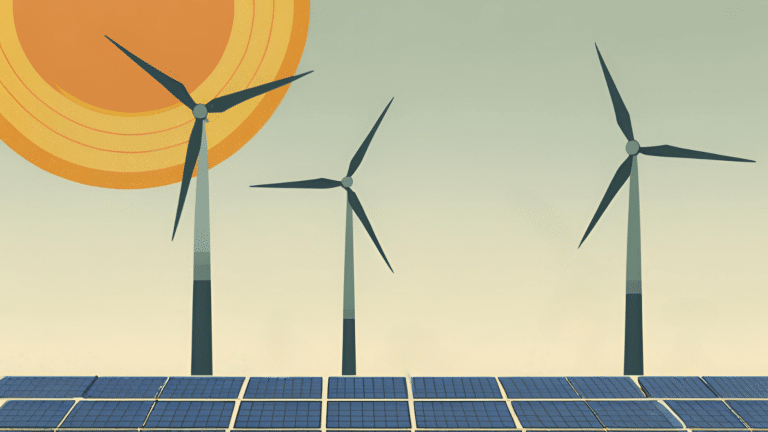
Falling Interest Rates Alone May Not Imminently Boost Investments in Renewable Energy
This Energy Explained post represents the research and views of the author. It does not necessarily represent the views of the Center on Global Energy Policy. The piece...

Sunspot: The Rise of Renewables in the Gulf
This Energy Explained post represents the research and views of the author. It does not necessarily represent the views of the Center on Global Energy Policy. The piece...
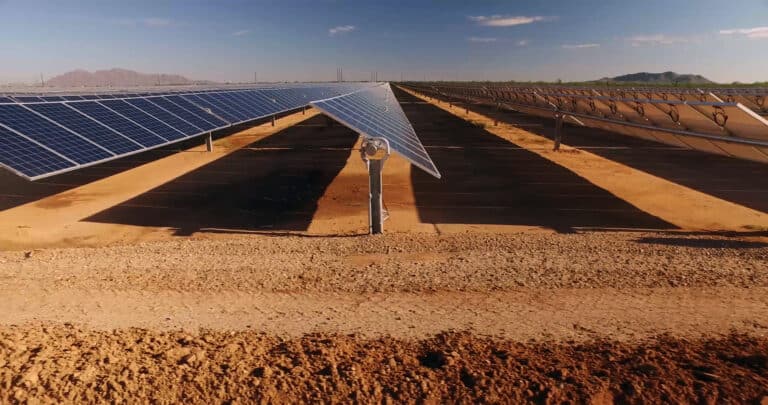
A Look Back at EU Power Generation in 2023
This Energy Explained post represents the research and views of the author. It does not necessarily represent the views of the Center on Global Energy Policy. The piece...
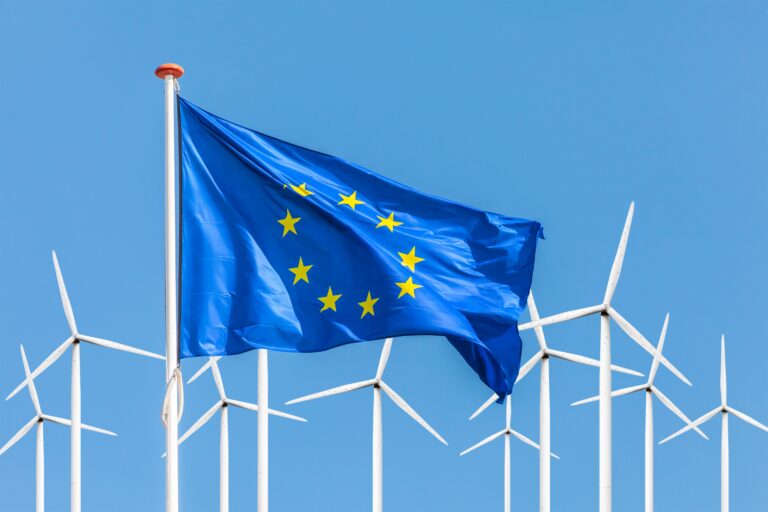
Relevant
Publications
The Potential Contribution of Enhanced Geothermal Systems to Future Power Supply: Roundtable Summary
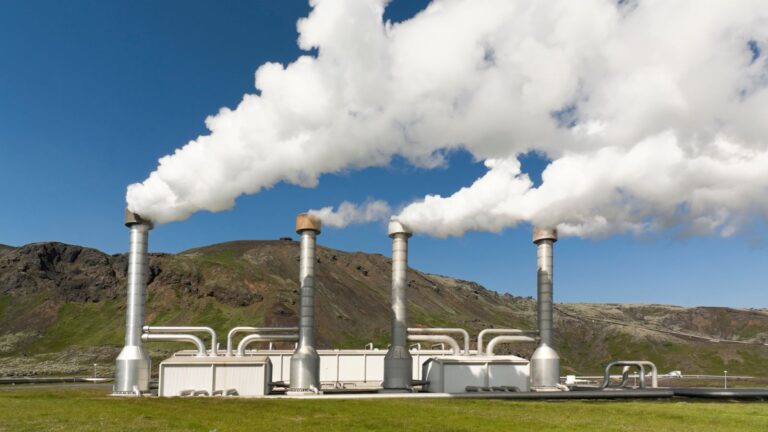
Analysis: China’s Push For Sustainability Disclosure Can Boost Green Growth
New government documents seek to align the climate disclosures of Chinese companies with national priorities and global best practices. Edmund Downie (Princeton U) and Erica Downs (Columbia U) write for Shuang Tan.




